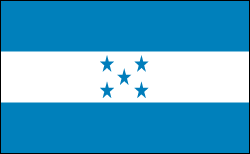HOPES
I hope that when I work with children and families from diverse backgrounds I can provide an environment that represents their culture and cultural needs. I want my words and my actions to express interest, respect and appreciation for who they are and encourage open dialogue and participation in the education of the children. We are building bridges not providing one way tickets to the dominant culture. Our differences are assets not deficiencies.
GOALS
It must be a goal of the early childhood field to include anti-bias education for teachers in training. With diversity steadily growing in the classroom we need to equip teachers with the skills and tools to work effectively with diversity. We need to move beyond the superficial multicultural curriculum that provides posters of people of color and an occasional book that represents ethnic and racial diversity.
It is my personal goal to continue to look for and recognize examples of bias in education and my daily life in order to expose them and work with others for change.
THANK YOU
I would like to give a special thank you to Dr. Parrish and my colleagues for sharing their personal stories and challenges when dealing with issues of diversity, equity, and social justice. Having an open forum to honestly discuss our bias, prejudice, and stereotypes allowed me to grow and make a move towards change. Without the support of others this can be a lonely and fearful journey. Thank you for your thoughtful, inspirational, and insightful posts and comments.





